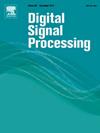Multi-dimensional spatial pruning for remote sensing image scene classification
IF 2.9
3区 工程技术
Q2 ENGINEERING, ELECTRICAL & ELECTRONIC
引用次数: 0
Abstract
In recent years, remote sensing image classification tasks have garnered widespread attention and have been extensively studied by researchers. Most current studies focus on improving classification accuracy, leading to overly large and complex networks with high computational costs that are challenging to deploy for real-time remote sensing tasks. To address this issue, neural network pruning has emerged as an effective solution. However, existing pruning methods typically prune along a single dimension, and as the pruning ratio increases, important weights in that dimension often suffer from over-pruning, resulting in significant accuracy loss. This paper proposes a novel pruning method for remote sensing scene classification—Multidimensional Space Pruning (MSP). MSP performs stereoscopic pruning of filters along both channel and depth dimensions, simultaneously removing redundant information across two different dimensions. This prevents excessive pruning of important weights in a single dimension, thereby significantly reducing model complexity while maintaining accuracy. As a novel pruning method, MSP achieves remarkable results. At a pruning ratio of 0.4, MSP-pruned VGG-16 and ResNet-34 models on the NWPU-RESISC45 dataset show accuracy drops of only 1.05 % and 0.71 %, respectively, while achieving compression ratios of 92.52 % and 93.19 %. Similarly, on the AID dataset, the accuracy drops are merely 0.26 % and 0.54 %, with compression ratios reaching 96.23 % and 88.56 %, respectively. Experimental results on two public remote sensing image datasets demonstrate that compared to existing methods, MSP achieves higher compression ratios while maintaining model accuracy, showcasing superior model compression performance.
求助全文
约1分钟内获得全文
求助全文
来源期刊

Digital Signal Processing
工程技术-工程:电子与电气
CiteScore
5.30
自引率
17.20%
发文量
435
审稿时长
66 days
期刊介绍:
Digital Signal Processing: A Review Journal is one of the oldest and most established journals in the field of signal processing yet it aims to be the most innovative. The Journal invites top quality research articles at the frontiers of research in all aspects of signal processing. Our objective is to provide a platform for the publication of ground-breaking research in signal processing with both academic and industrial appeal.
The journal has a special emphasis on statistical signal processing methodology such as Bayesian signal processing, and encourages articles on emerging applications of signal processing such as:
• big data• machine learning• internet of things• information security• systems biology and computational biology,• financial time series analysis,• autonomous vehicles,• quantum computing,• neuromorphic engineering,• human-computer interaction and intelligent user interfaces,• environmental signal processing,• geophysical signal processing including seismic signal processing,• chemioinformatics and bioinformatics,• audio, visual and performance arts,• disaster management and prevention,• renewable energy,
 求助内容:
求助内容: 应助结果提醒方式:
应助结果提醒方式:


